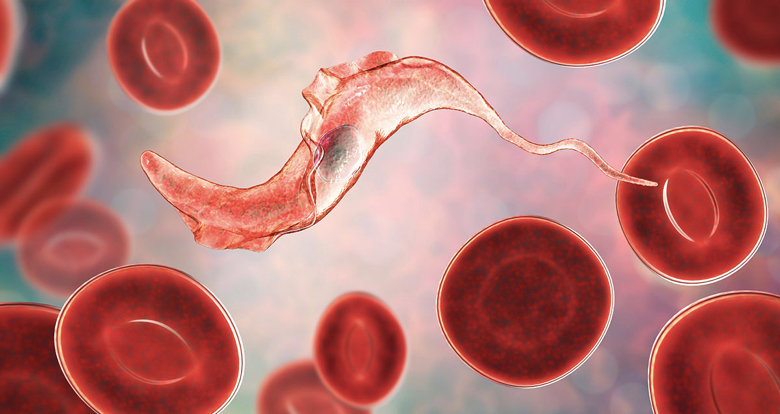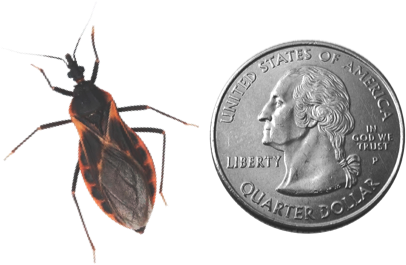Disease overview
Chagas disease is an infection caused by a parasite commonly found in rural areas of Mexico and Central and South America. The infection is lifelong and if left untreated, can be life threatening.
Chagas disease affects 6-7 million people in Mexico and Central and South America, although many people do not know they are infected (WHO). If people with Chagas disease do not receive treatment, they will live for many years before developing any symptoms. Most people with the infection will never get sick from it, but approximately one-third will develop heart or intestine problems.

The parasite, named Trypanosoma cruzi, gets into a person after they are bitten by an insect, which has many different names, including kissing bug, vampire bug, or conenose bug.
The bugs are found in rural areas of Mexico and Central and South America, especially in houses made of mud, adobe, straw, and palm thatch. The bug lives in crevices (cracks) in the wall and comes out at night to bite a person, usually on their face. The parasite then enters through the bite, infecting the person.
Photo by avanceyperspectiva.cinvestav.mx
The Vinchuca, Chinche Besucona, Barbeiro, Pito, Chipo, or Kissing Bug is small when it is a new insect, but it can grow to be the size of a quarter.

Most people get infected by triatomines carrying the parasite, but there are other ways to become infected with Chagas disease, including:
Some doctors in the United States have low levels of awareness of Chagas disease, and are unaware of how to test and treat patients with this illness. Please download this fact sheet to bring with you to your doctor for their information, and we are happy to communicate with your physician about your case to facilitate your care.
Chagas disease is characterized by 3 phases:
This phase can last a few weeks or months. Many people do not remember this phase because a person may have no symptoms or the symptoms can be mild. Typical symptoms are:
Even if a person develops signs during the acute phase, they usually feel well within a few weeks or months. If the person is not treated with antiparasitic medication, the infection remains in the body. (CDC)
People who do not receive antiparasitic treatment and who do not already have heart damage after the acute illness (90%) are in a stage in which they do not have heart or intestinal damage but still are infected. There is the possibility that they will develop problems, for that reason they still need follow up, and some people may benefit from antiparasitic medications to try to cure the infection.
This phase can last for decades or even for the entirety of someone’s lifetime. Even though most people show no symptoms, around 20 to 30 percent may develop cardiac and gastrointestinal complications (CDC) such as:
The CDC estimates that there are 300,000 individuals living with Chagas disease in the United States (CDC). Most of these people were born in rural areas of Latin America and have moved to the United States, but there are also an estimated 22-108 babies born to Latina moms every year (Emerg Infect Dis)(CDC), and there is a likely very small but real risk of getting the infection from an infected insect in the United States.
While still underdiagnosed, doctors have studied the rates of Chagas in Latin American immigrants in a few places in the United States. In Los Angeles County, 1.24% of immigrants from endemic regions of Latin America had Chagas disease, but in individuals from El Salvador the risk was higher (3.45%) (Clin Infect Dis). In East Boston, MA, 1% of immigrants tested were infected (Open Forum Infect Dis). In the Metropolitan Washington DC area, 3.8% of immigrants tested were infected, 2% of the central american immigrants, and 22% of the Bolivian immigrants (Clin Infect Dis).